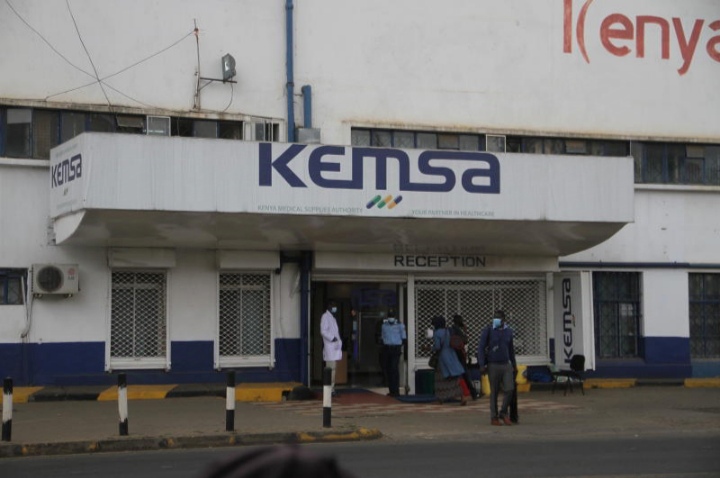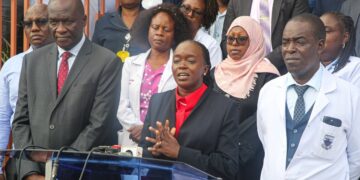Kenyan legislators have reopened investigations into one of the country’s most controversial healthcare projects – the Sh63 billion (approximately £380 million) Managed Equipment Service (MES) programme – amidst revelations that some counties are still paying for equipment they never received.

The National Assembly’s Public Accounts Committee (PAC) announced the revival of the investigation following a damning report by the Auditor General that highlighted systematic failures in the project’s implementation. The report revealed that taxpayers have lost an estimated Sh15 billion through inflated costs and equipment that remains unused or undelivered.
“Initial findings suggest a deliberate scheme to defraud public coffers,” said John Mbadi, the PAC Chairman. “We’ve uncovered payment records for phantom deliveries and maintenance contracts for non-existent equipment. This level of impunity cannot go unchallenged.”

National Assembly during a previous session.courtesy photo
The programme, launched in 2015 during former President Uhuru Kenyatta’s administration, was touted as a game-changer for Kenya’s healthcare system. Five international firms – GE Healthcare, Philips Healthcare, Bellco SRL, Esteem Industries, and Mindray Biomedical – were awarded contracts to supply and maintain specialized medical equipment across the country’s 47 counties.
A detailed analysis by the Ministry of Health reveals disturbing statistics:
- Counties have paid Sh131 million annually for equipment, regardless of delivery status
- Only 43% of contracted radiology equipment was fully functional as of December 2023
- 16 counties received theatre equipment despite lacking qualified personnel
- Maintenance costs have surged by 213% above initial estimates
- Equipment worth Sh7.1 billion remains in storage due to lack of installation space
Dr James Nyikal, a veteran healthcare administrator and member of parliament, said: “The scandal goes beyond procurement irregularities. We’re looking at a systemic failure that has crippled healthcare delivery in many counties. Some facilities received CT scanners worth millions when they lacked basic amenities like reliable power supply or qualified radiologists.”
The Council of Governors has presented evidence showing that county governments were coerced into accepting the equipment through mandatory deductions from their annual allocations. “Many counties are servicing loans for equipment they either never received or cannot use,” said Governor Anne Waiguru, Chair of the Council of Governors.
Records from the Controller of Budget indicate that:
- Each county has paid approximately Sh200 million annually since 2015
- Total deductions from county allocations exceed Sh42 billion
- Maintenance costs alone account for Sh4.5 billion annually
- Seven counties have equipment worth Sh850 million lying idle due to lack of specialists
An investigation by the Ethics and Anti-Corruption Commission (EACC) previously revealed that procurement prices were inflated by up to 300% compared to market rates. A dialysis machine that typically costs Sh2.5 million was procured at Sh7.8 million, while CT scanners were acquired at triple the market price.
“The pricing discrepancies are staggering,” said Dr Mercy Mwangangi, a health policy expert. “For the cost of one MRI machine under this programme, we could have purchased three at market rates and still had funds for training personnel.”
The Kenya Medical Practitioners and Dentists Union (KMPDU) has provided documentation showing that:
- Only 35% of trained personnel remained at equipped facilities
- 28 counties lack specialists to operate advanced equipment
- Maintenance contracts cost more than new equipment purchases
- Patient access to specialized services has improved by only 22% against a target of 90%
International health partners have expressed concern about the impact on Kenya’s healthcare system. The World Health Organization’s representative in Kenya, Dr Abdourahmane Diallo, noted: “This scandal has significantly hampered Kenya’s progress towards universal health coverage. Resources that could have strengthened primary healthcare were diverted to unsustainable projects.”
The parliamentary committee has set an ambitious six-month timeline for the investigation. Key areas under scrutiny include:
- Original needs assessment and feasibility studies
- Procurement processes and pricing mechanisms
- Equipment delivery and installation records
- Maintenance contract terms and execution
- County-level implementation and utilization rates
- Financial trails and payment structures
Transparency International Kenya has offered technical support to the investigation. “We’ve assembled a team of forensic auditors and procurement experts to assist the committee,” said Sheila Masinde, the organization’s Executive Director. “Our preliminary review suggests deliberate manipulation of procurement processes.”
The committee plans to summon over 30 former officials, including cabinet secretaries, principal secretaries, and county executives who were involved in the project’s implementation. Representatives from the five supplier companies will also be required to appear before the committee.
As the investigation unfolds, health experts emphasize the need for systemic reforms in healthcare procurement. “This scandal represents everything that’s wrong with our procurement systems,” said Dr Patrick Amoth, Director General of Health. “The lessons learned must inform future healthcare investments.”
The probe comes as Kenya implements ambitious healthcare reforms under the current administration. President William Ruto’s government has promised to review all ongoing healthcare contracts and institute stricter procurement controls.
The investigation’s findings could lead to criminal prosecutions and recovery of misappropriated funds, potentially setting a precedent for future public healthcare projects in Kenya and the wider East African region.



















